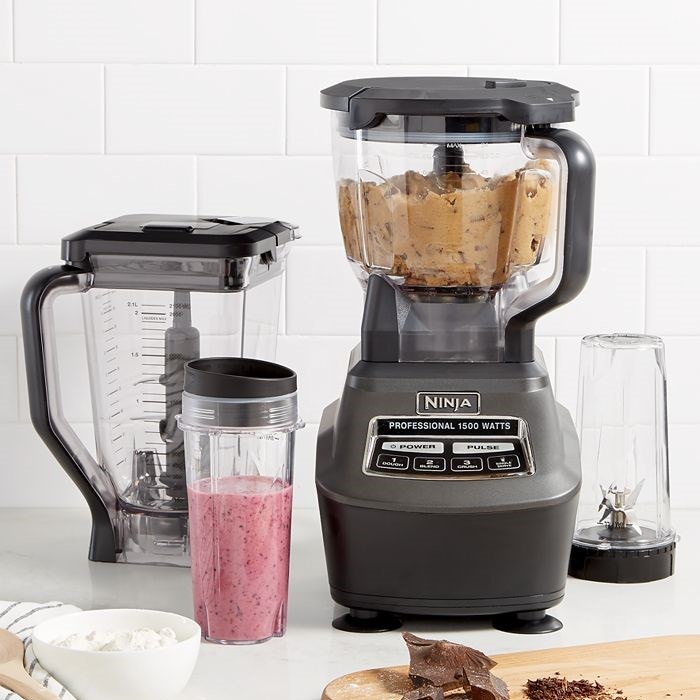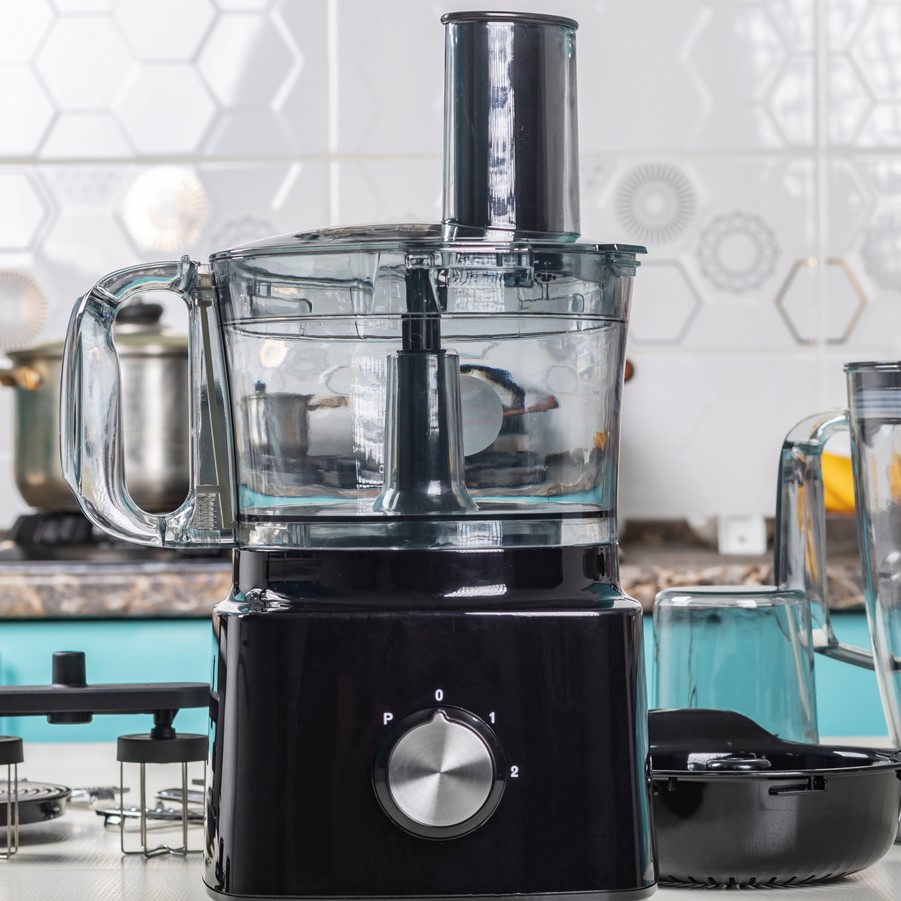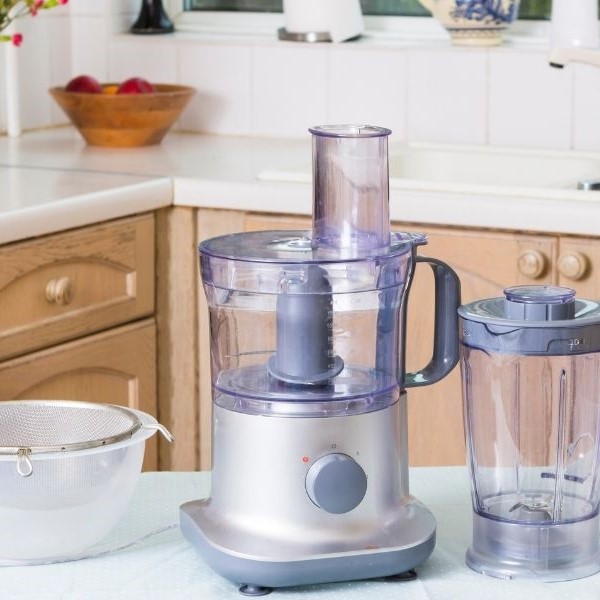
Introduction to Food Processors and Blenders
Deciding between a food processor and a blender can be tricky. It’s important to understand the specific uses of each to make an informed decision. A food processor is the ultimate kitchen helper. It handles tasks like slicing, dicing, and even kneading dough. Blenders are perfect for liquid creations like smoothies and soups.

When choosing, consider what tasks you do most often. For liquid-based recipes or smooth mixtures, a blender is your best bet. If your kitchen work involves more chopping and prepping solid ingredients, a food processor will be more helpful. Some devices even combine features of both, offering more versatility. But remember, the design and primary functions differ.
Learn the capabilities of each to guide your choice. We’ll explore the functionalities, compare their attachments, and share recipes to demonstrate their uses. This will ensure you select the right appliance for your cooking needs.
Food Processor and Blender: Understanding Functionality
When considering a food processor versus blender, the key is in their functionality. Think of it this way: a blender specializes in smooth, liquid preparations, while a food processor tackles a wider breadth of kitchen tasks.
Here’s a basic rundown of each appliance’s capabilities:
- Blenders are ideal for making smoothies, soups, and other blended liquids. They shine when it comes to creating a consistent, creamy texture, and can even crush ice for chilled drinks. The focused design provides a narrow jar which helps in pulling ingredients towards the blades.
- Food Processors are your go-to for solid food prep. This includes slicing vegetables, grating cheese, or kneading dough. They come with a set of blades and discs, making them versatile for various tasks like chopping nuts or pureeing. Their wider bowl and heavier base make it easy to work with bulkier items.
In essence, if your recipe is something you’d drink, drizzle, or dip, reach for a blender. For recipes requiring more texture and those you’d eat with a fork or spoon, a food processor will be more suitable. Keep in mind, a powerful blender like the KitchenAid K400 can push boundaries, thanks to accessories like a tamper for tougher ingredients.
So, consider what you most often make in the kitchen. Smooth and wet? A blender is your friend. More solid and varied in texture? A food processor is what you need.
Versatility in the Kitchen: Processor vs Blender
Choosing the right kitchen appliance can make your cooking both easier and more exciting. When it comes to versatility, food processors and blenders have unique strengths that suit different tasks.
A blender is your go-to for liquids and creamy textures. It can handle tasks like crushing ice for smoothies or blending soups smoothly. With its narrow jar, the blender ensures that all ingredients get thoroughly mixed. This is perfect for drinks, sauces, and purees.
On the other hand, a food processor is a multi-purpose tool. While it doesn’t handle liquids as well as a blender, it excels with solid foods. If you need to chop nuts, slice veggies, or knead dough, the food processor is your best bet. Its wide bowl makes it easy to manage bulky items. The interchangeable blades and discs make it a versatile choice for nearly any food prep task.
Food processors are particularly good for dishes that need texture. They can do rough chops for salads or more precise cuts for dishes like ratatouille. The food processor can also grate cheese, shred cabbage for coleslaw, or quickly mix ingredients for a batch of cookies.
In summary, use a blender for smooth and liquid mixes, and turn to a food processor for solid, textured food prep. Both devices are a boon to any kitchen, but serve different roles in meal preparation. Knowing when to use each will save you time and help you create better dishes.
Essential Attachments: Processor and Blender Compared
When picking between a food processor and a blender, think about the attachments. Each has specific ones that make them great at different tasks. Let’s compare the two.
Food Processor Attachments:
- S-shaped blade: This is great for chopping and pureeing.
- Slicing discs: These make even cuts, perfect for salads.
- Shredding discs: Ideal for grating cheese or veggies.
- Dough blade: Kneads dough for bread or pizza effectively.
These attachments mean food processors can chop, slice, knead, and mix. They handle big jobs like prepping veggies or making dough.
Blender Attachments:
- Fixed blade: Most often used for blending and pureeing.
- Tamper (for some models): Helps mix thick ingredients better.
Blenders usually have one main blade. It’s best for smooth liquids like drinks or soups.
A food processor’s wide bowl and many blades tackle many jobs. It can do rough chops or fine slices. A blender’s tall jar and fixed blade work best for smooth and liquid mixes. With these points in mind, you can pick the right tool for your kitchen tasks.
 Popular Uses for Blenders
Popular Uses for Blenders
Blenders excel in creating smooth, liquid mixtures. They are essential for drinks, soups, and sauces with a creamy texture. Below are some popular uses for blenders in everyday cooking:
- Making Smoothies: Combine fruits, vegetables, and liquids for a quick, nutritious drink.
- Blending Soups: Puree cooked vegetables into a smooth, warm soup with ease.
- Creating Sauces: Whip up everything from tomato sauces to salad dressings.
- Crafting Desserts: Produce silky custards or blend ice-cream ingredients.
- Crushing Ice: Perfect for iced drinks and cocktails.
Blenders are known for their powerful motors capable of liquefying ingredients. They generally include a fixed blade and a tall jug. This design helps pull ingredients down to the blade, which aids in achieving a uniform consistency. Liquids and soft foods blend well, making the appliance ideal for drinks and fine purees. Some models, like the K400, push the usual limits with accessories for thicker mixes, like nut butters.
To summarize, reach for a blender when you aim for a smooth, liquid outcome. It’s the perfect kitchen companion for beverages, pureed dishes, and creamy dessert preparations. Its usage is a testament to its role in a healthy and convenient lifestyle.
Favorite Recipes with Food Processors
Food processors handle a variety of kitchen tasks. They chop, slice, and even knead with ease. Here are some favorite recipes that show off the versatility of food processors:
- Greek Meatballs: Mix minced meat, spices, and herbs in the food processor. This provides a quick way to prepare flavorful meatballs.
- Quick and Easy Guacamole: Combine avocados, lime juice, red onion, and cilantro. The food processor gives you creamy guacamole in minutes.
- Homemade Hummus: Blend chickpeas, tahini, garlic, lemon juice, and olive oil. Adjust the flavors as you like. The food processor delivers smooth and delicious hummus.
- Shredded Carrot Salad: Shred carrots quickly, then toss with a tangy vinaigrette. This makes a fresh and crunchy salad.
- Pizza Dough: Combine flour, yeast, olive oil, and water. The food processor does the kneading. You get perfect pizza dough every time.
Use a food processor to save time and expand your kitchen capabilities. These recipes highlight how the food processor beats blenders in certain tasks.
Making the Choice: When to Use Which
Choosing between a food processor and a blender comes down to your cooking style. For liquids like smoothies or soups, blenders are best. They create smooth blends effortlessly. But, they can struggle with thicker ingredients. Some models, like the KitchenAid K400, come with tamps for tougher tasks.
For tasks demanding texture, like chopping or slicing, use a food processor. It works well with solid ingredients. It can slice veggies, knead dough, and even grind meat.
Ask yourself what you make most often. For drinks and purees, go with a blender. If you’re into baking or vegetable prep, pick a food processor.
Remember that some recipes work with either. For dips or dressings, both could work. Both appliances have powerful motors and easy-to-clean designs.
At the end of the day, consider your usual kitchen tasks. For smooth, liquid creations, stick to a blender. For more textured, solid food prep, choose a food processor. It all comes down to what you cook and enjoy most.
 FAQs on Food Processors and Blenders
FAQs on Food Processors and Blenders
When choosing between a food processor and a blender, many questions can arise. In this section, we will address some frequently asked questions to help you understand their differences better and make an informed decision that suits your cooking style.
Can I make smoothies in a food processor?
Yes, but blenders are better suited for this. They create smoother textures for drinks.
Is a food processor good for making soups?
Some soups can be made in a food processor, but for creamy consistency, a blender is preferred.
Can a blender chop vegetables?
A high-powered blender can chop soft vegetables, but for precise cuts, a food processor is ideal.
Is a food processor necessary if I have a blender?
If you often chop, slice, or knead, a food processor is a valuable addition to your kitchen.
Can I use a blender to grind meat?
A food processor is better for grinding meat, as it provides more control and consistency.
Will a food processor crush ice like a blender?
A food processor can crush ice to some extent, but a blender is designed for this task.
Is it better to make dough in a food processor or mixer?
A food processor can quickly knead dough, which is harder to do in a blender.
By answering these questions, we hope to clarify the distinctive roles of food processors and blenders. Each has unique capabilities, and your choice will depend on the types of dishes you frequently make. Whether it’s liquid recipes or more solid preparations, understanding the strengths of each appliance will empower you to use them to their full potential and make your cooking experience enjoyable and efficient.





